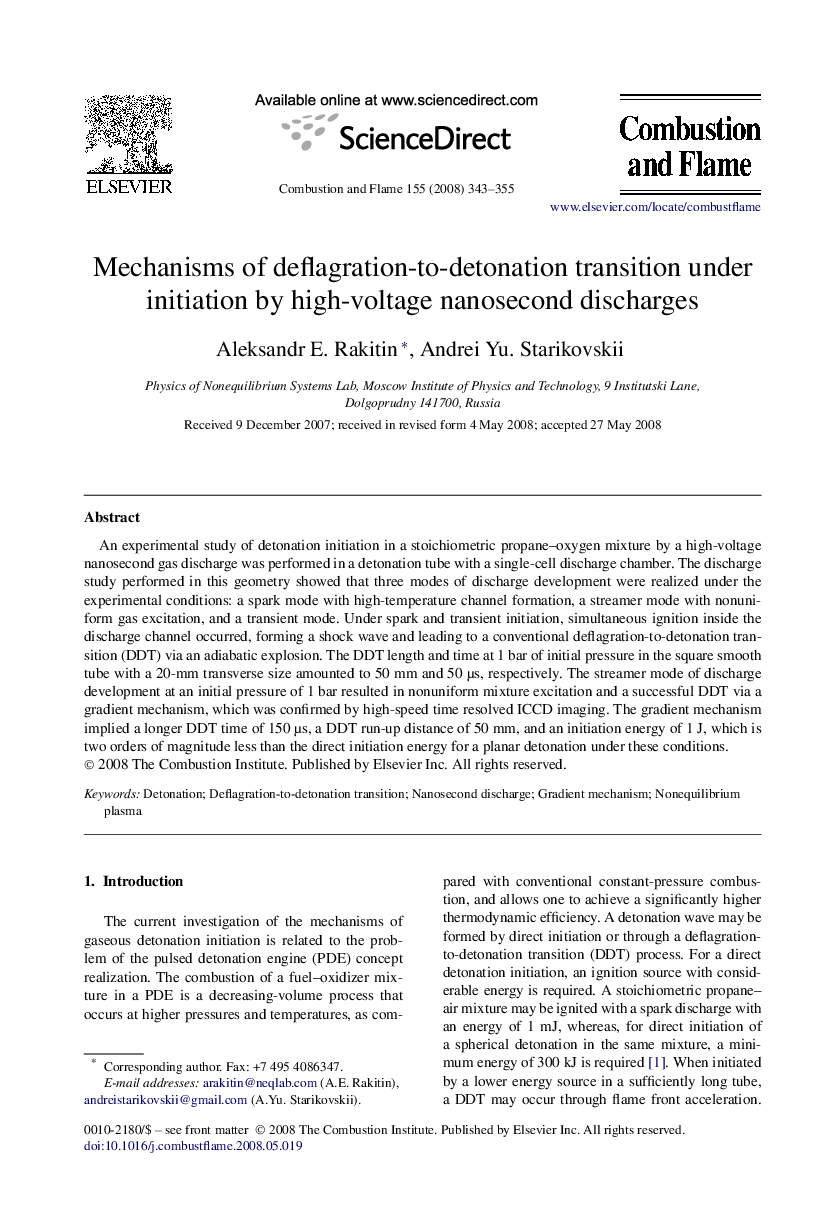| کد مقاله | کد نشریه | سال انتشار | مقاله انگلیسی | نسخه تمام متن |
|---|---|---|---|---|
| 169538 | 458015 | 2008 | 13 صفحه PDF | دانلود رایگان |

An experimental study of detonation initiation in a stoichiometric propane–oxygen mixture by a high-voltage nanosecond gas discharge was performed in a detonation tube with a single-cell discharge chamber. The discharge study performed in this geometry showed that three modes of discharge development were realized under the experimental conditions: a spark mode with high-temperature channel formation, a streamer mode with nonuniform gas excitation, and a transient mode. Under spark and transient initiation, simultaneous ignition inside the discharge channel occurred, forming a shock wave and leading to a conventional deflagration-to-detonation transition (DDT) via an adiabatic explosion. The DDT length and time at 1 bar of initial pressure in the square smooth tube with a 20-mm transverse size amounted to 50 mm and 50 μs, respectively. The streamer mode of discharge development at an initial pressure of 1 bar resulted in nonuniform mixture excitation and a successful DDT via a gradient mechanism, which was confirmed by high-speed time resolved ICCD imaging. The gradient mechanism implied a longer DDT time of 150 μs, a DDT run-up distance of 50 mm, and an initiation energy of 1 J, which is two orders of magnitude less than the direct initiation energy for a planar detonation under these conditions.
Journal: Combustion and Flame - Volume 155, Issues 1–2, October 2008, Pages 343–355